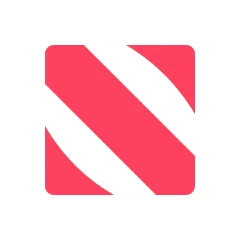5 Types of Mortgage Loans for Buyers and Refinancers

Some or all of the mortgage lenders featured on our site are advertising partners of NerdWallet, but this does not influence our evaluations, lender star ratings or the order in which lenders are listed on the page. Our opinions are our own. Here is a list of our partners.
Home loans aren't one-size-fits-all. Many different types of mortgage loans exist, and they are designed to appeal to a wide range of borrowers' needs.
The most common mortgage term is 30 years, though some fixed-rate borrowers choose a 15-year term to accrue less interest and pay off the loan faster. Depending on the type of loan you're getting, other terms, like 20- or 10-year loans, may be available.
Types of mortgage loans
1. Conventional loans
Conventional loans are the most common type of home loan and are available with the widest variety of lenders. These mortgages meet standards that allow lenders to resell them to the government-sponsored enterprises Fannie Mae and Freddie Mac.
The 2025 limit for conventional conforming loans is $806,500 in most counties, and $1,209,750 in high-cost areas.
Pros
Down payments can be as low as 3%.
Because they’re offered by most lenders, you have the most flexibility to shop and compare rates.
Cons
Generally require a credit score of at least 620 and a debt-to-income ratio (the percentage of your monthly income spent paying debts) under 36%.
Borrowers with down payments under 20% have to pay for private mortgage insurance.
Best for: Home buyers with strong credit and low amounts of existing debt
Where to get one: Shop NerdWallet’s list of the best mortgage lenders.
2. Government-backed loans
Government-backed loans are mortgages that are insured by different federal agencies. This protects mortgage lenders because if the borrower becomes unable to repay the loan, the agency has to handle the default. Having that backstop allows lenders to offer mortgages to a broader range of potential buyers.
FHA loans
Home loans insured by the Federal Housing Administration (FHA) have more flexible credit requirements than conventional mortgages. An appraisal is required to ensure the home meets the FHA’s minimum property standards.
Pros
Allow for credit scores as low as 500 with a 10% down payment; with a credit score of 580 or higher you can make a 3.5% down payment.
Debt-to-income ratios up to 50% are allowed for qualifying borrowers with credit scores of 580 or higher.
Cons
FHA loans require FHA mortgage insurance, which lasts for 11 years or the life of the loan, depending on the size of your down payment.
FHA loan limits are lower than conventional loans — the 2025 limit is $524,225 for most single-unit properties, though this goes up to $1,209,750 in high-cost areas.
Best for: Borrowers with lower credit scores and limited down payment savings.
Where to get one: Shop NerdWallet’s list of the best FHA mortgage lenders.

VA loans
Loans backed by the Department of Veterans Affairs (VA) are available to veterans and members of the military who meet minimum service requirements.
Pros
No down payment requirement.
No mortgage insurance requirement, even if you put 0% down.
Cons
VA loans are only available to veterans, current service members and eligible spouses.
While there is no set minimum credit score, most lenders want to see a score of at least 620.
Best for: Military borrowers.
Where to get one: Shop NerdWallet’s list of the best VA lenders.
» MORE: Read about VA loan requirements
USDA loans
The U.S. Department of Agriculture backs USDA loans for borrowers in qualifying areas. Direct loans are also available to borrowers below their local income threshold.
Pros
No down payment requirement.
Eligible counties extend beyond rural areas.
Cons
Borrowers are subject to income limits.
Annual fee of 0.35% of the remaining loan balance.
Best for: Lower-income borrowers in rural or suburban areas.
Where to get one: Shop NerdWallet’s list of the best USDA lenders.
3. Jumbo loans
Jumbo loans are mortgages that exceed the conventional loan limit of $806,500.
Pros
Allow borrowers to buy homes that are too expensive to be purchased by Fannie Mae or Freddie Mac.
Competitive interest rates.
Cons
Lenders may want a down payment as high as 20%.
Borrowers must demonstrate the income and cash reserves to keep up with mortgage payments. Lenders typically don’t ask to see more than six months’ worth of cash reserves for a conventional loan, while jumbo loan lenders may require reserves to cover up to 18 months.
Best for: Borrowers who need a large mortgage.
Where to get one: Shop NerdWallet’s list of the best jumbo loan lenders.
4. Fixed-rate mortgages
Fixed-rate mortgages are home loans with an interest rate that's set for the entire term.
Pro
Provide buyers with predictable monthly payments.
Con
If rates drop, you have to refinance to take advantage of lower rates.
Best for: Buyers who are planning to stay in their homes longer.
5. Adjustable-rate mortgages
Adjustable-rate mortgages begin with an initial rate that’s fixed for a specified period; then the rate adjusts periodically for the rest of the term. For example, a 5-year ARM has an interest rate that is set for the first five years and then adjusts annually.
Pro
Can help buyers stretch their budgets, since ARMs begin with a fixed period that usually has a lower introductory rate.
Con
Once the introductory period is over, an ARM’s rate adjusts, possibly raising your mortgage payment.
Best for: Buyers who plan to move or refinance before the rate begins adjusting, or who are confident they'll be able to handle a potentially higher rate when the introductory period ends.
» MORE: Compare the pros and cons of adjustable- and fixed-rate mortgages
Other types of mortgage loans
Now you know the most common types of mortgages you're likely to encounter when buying a home. Here are other mortgage types you might explore, depending on your needs.
Construction loans: Construction loans finance the building of a new home. A construction-to-permanent loan covers both the construction and the home purchase, while a construction-only loan gets paid off when building is complete. If you're buying a new construction home that's already finished, you don't need a construction loan since the building's already done.
Interest-only mortgages: With an interest-only mortgage, you make payments on the interest — not paying down the loan principal — for the first few years of the home loan. After that period ends, you can end the loan by selling or refinancing, or begin to make monthly payments that cover principal and interest.
ITIN loans: Buyers who don't have and aren't eligible to get Social Security numbers can use their individual taxpayer identification number, or ITIN, to apply for home loans from lenders offering ITIN loans. Because lenders usually use SSNs to verify buyers' finances, ITIN loans can require extensive documentation.
Non-qualified (non-QM) loans: Non-qualified loans are mortgages that don't fit Fannie Mae and Freddie Mac standards for conventional loans. Lenders set their own requirements, and because the lender is assuming all of the risk, these loans often come with higher down payment minimums.
Professional loans: Some lenders offer mortgages that are designed for borrowers in specific professions. For example, physician loans make allowances for the limited income future doctors have during medical school.
Renovation mortgages: With a renovation mortgage, the costs of updating or upgrading the home are rolled into the amount borrowed for the purchase. The Freddie Mac CHOICERenovation loan, Fannie Mae HomeStyle loan and FHA 203(k) loan are common renovation mortgages.





